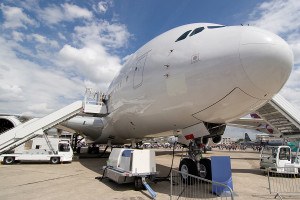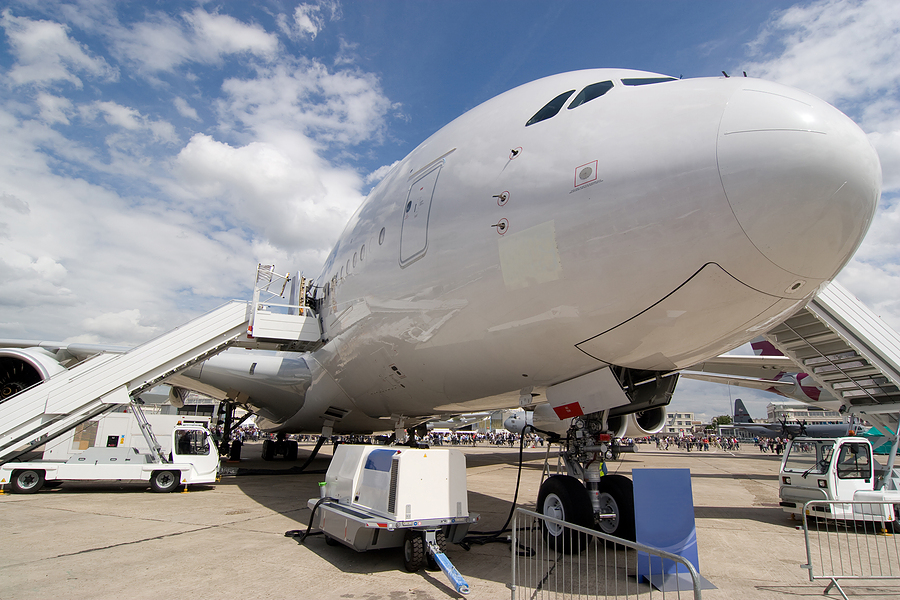 Airbus acknowledged a combination of manufacturing and design flaws on Wednesday as it confirmed the discovery of more examples of wing cracks on the A380, while insisting the world’s largest airliner is safe to fly.
Airbus acknowledged a combination of manufacturing and design flaws on Wednesday as it confirmed the discovery of more examples of wing cracks on the A380, while insisting the world’s largest airliner is safe to fly.
A top executive said the European planemaker had come up with a solution to the cracks on a small number of parts inside the superjumbo’s wings, which prompted European safety authorities to order inspections last week.
Airbus confirmed a Reuters report that more examples of the cracks had been discovered during the compulsory inspections, but declined to give further details before a Friday deadline for completing an initial phase of checks.
“The A380 is safe to fly,” Tom Williams, executive vice president of programmes at Toulouse-based Airbus, said.
The cracks were caused by factors including the choice of aluminium alloy for some of the 4,000 brackets in the wings as well as a type of bolt that put too much stress on the metal.
Engineers have ruled out metal fatigue, Williams said.
Airbus moved to shore up confidence in the world’s largest jetliner amid a drip-feed of disclosures about cracking on components used to fix the outside of the wing to its ribcage.
Williams flew to Dublin to give an unscheduled address at an industry conference to dampen any concerns about safety.
European authorities have ordered inspections on almost a third of the superjumbo fleet, or 20 aircraft, after two types of cracks were discovered within weeks of each of other.
Since then, similar cracks have been found inside the 9,100-square-foot wings of at least one of the superjumbos examined under the directive, industry sources told Reuters on Tuesday.
Airbus officials said that having understood the problem, they expected most of the aircraft being tested would show similar evidence of cracks, but that repairs would solve this well before they became a potential hazard.
It declined to say which airline had reported cracks during inspections but the spotlight is expected to fall on Singapore Airlines, which has said it is inspecting six aircraft under phase one of checks involving the most heavily used jets .
The airline opened up the debut A380 service in Dec. 2007.
TECHNICAL FIX
Singapore Airlines said it was carrying out inspections as required and would give an update once they were completed. The checks involve emptying and venting fuel checks for about 24 hours followed by a visual check via a manhole under the wing.
The cracks first came to light during repairs, lasting over a year, on a Qantas A380 severely damaged by a dramatic engine explosion in November 2010 that punched holes in the wing.
At first engineers were unsure what had caused the cracks but the initial microscopic flaws led to the discovery of a second and potentially more serious type of crack, some of them up to two inches long, in the central part of the wing.
The findings caused concern at the European Aviation Safety Agency which turned down Airbus’s request for limited extra time to examine the data and ordered mandatory inspections last week.
Designed just before the latest generation of mainly carbon-composite jetliners like Boeing’s newly delivered 787 Dreamliner, the A380 is about 60 percent aluminium, the main material used for making aircraft for decades.
“All aluminium structures have cracks. It is the nature of the beast. Each component is designed and modelled according to the desired capacity,” Williams said. If one part breaks the structure is designed so that the load is spread elsewhere.
To deal with the unforeseen cracking problem, Airbus is changing its manufacturing processes to ensure smooth operation until at least the next four-year maintenance checks.
Longer term, it plans to switch to a different alloy, restoring the aircraft to its normal lifespan of 25 years-plus.
The wings were designed and built in Britain, which prides itself on state-of-the-art wing assembly. Unions there recently objected to some work being outsourced to South Korea.
Industry executives at the Dublin conference welcomed the clarification and said the problem had been understood.
“When they had the second round of cracks, that got more people’s attention and a few airlines were asking questions,” an executive said, speaking on condition he was not identified.
An Australian engineering union last week called for all A380s to be grounded pending more investigation. Airbus has dismissed this by saying regulators would be quick to ban flights if they believed safety to be at risk.
(Reporting by Tim Hepher, Editing by Elaine Hardcastle, Gary Hill)
Was this article valuable?
Here are more articles you may enjoy.


 Dog-Related Injury Claim Payouts Hit $1.12B in 2023, Report Shows
Dog-Related Injury Claim Payouts Hit $1.12B in 2023, Report Shows  Supplemental Claims Don’t Need to Include Damage Estimates, Fed Appeals Court Says
Supplemental Claims Don’t Need to Include Damage Estimates, Fed Appeals Court Says  Synopsys Sued by Private Equity Firm for Shopping $3 Billion Unit
Synopsys Sued by Private Equity Firm for Shopping $3 Billion Unit  CoreLogic Report Probes Evolving Severe Convective Storm Risk Landscape
CoreLogic Report Probes Evolving Severe Convective Storm Risk Landscape 